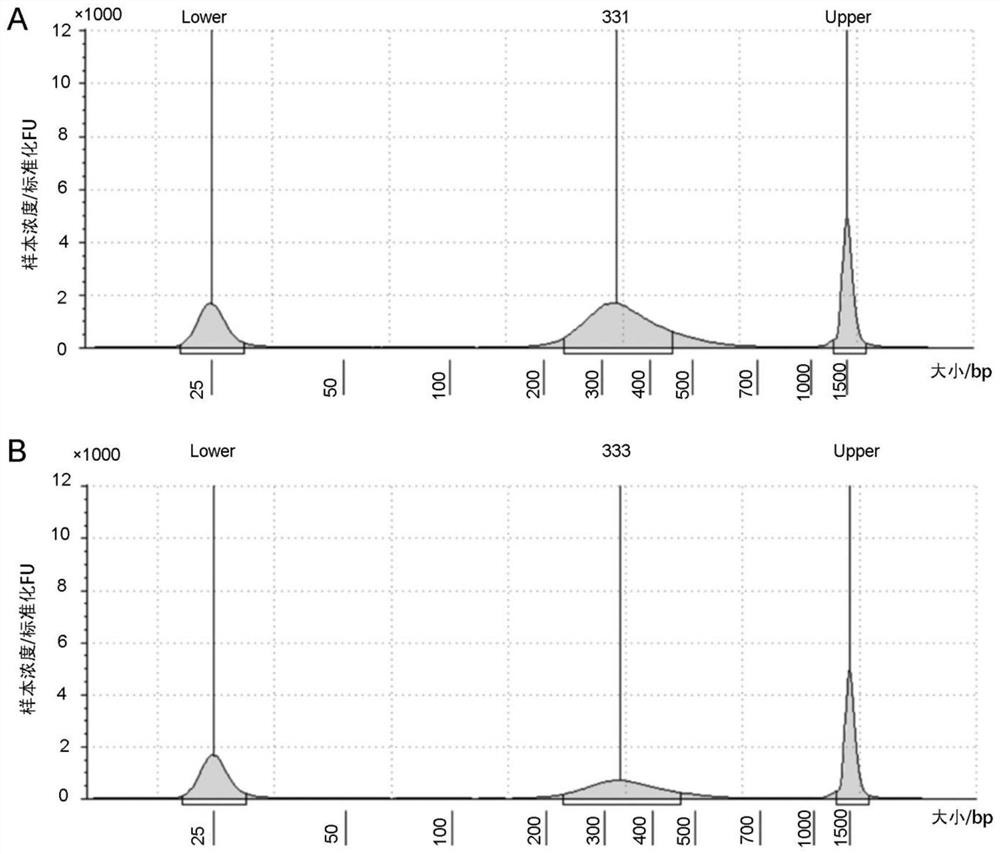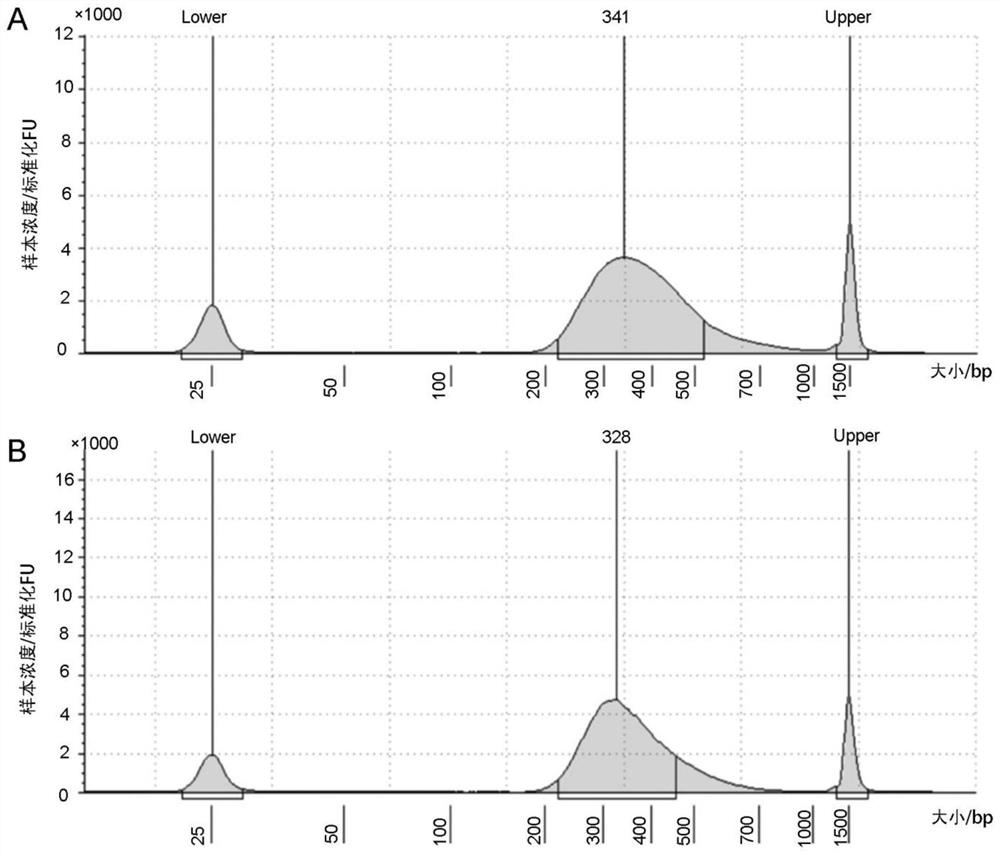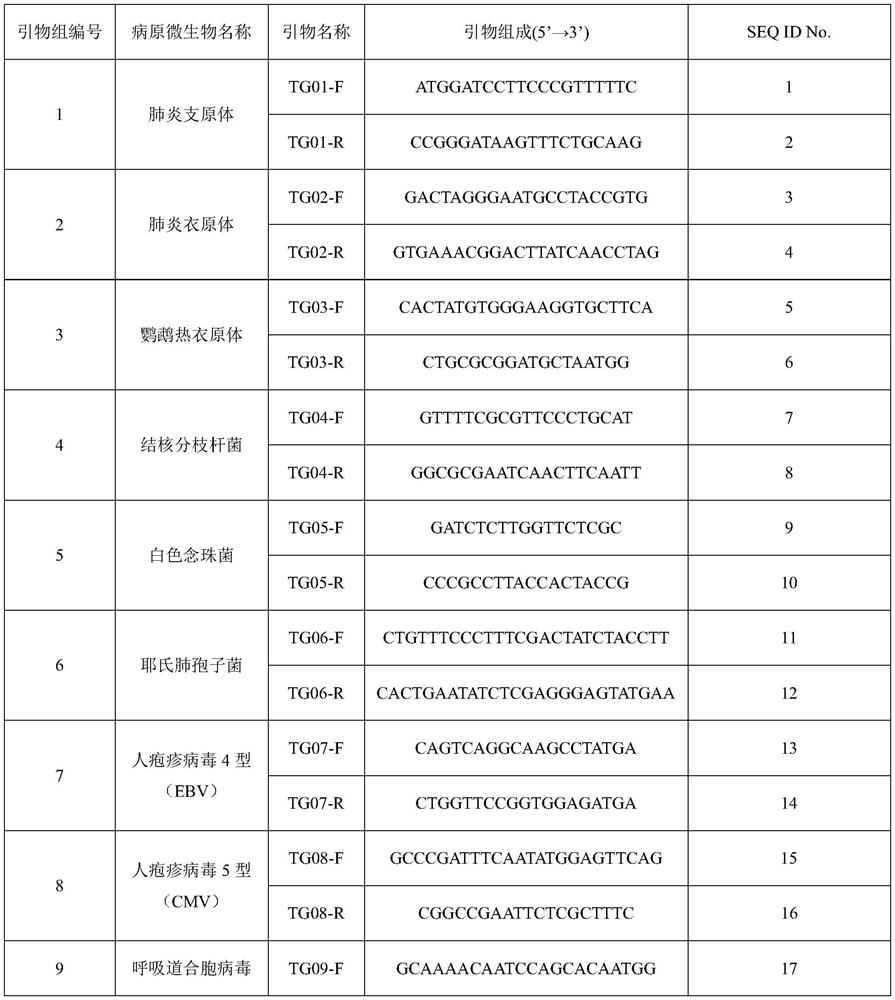A kind of detection primer combination, kit and application of respiratory pathogenic microorganisms
A technology of pathogenic microorganisms and detection kits, which is applied in the field of microbial detection, can solve the problems of low identification accuracy, long cycle, and dependence on cultivation, and achieve the effects of low sequencing data, low cost, and high detection sensitivity
- Summary
- Abstract
- Description
- Claims
- Application Information
AI Technical Summary
Problems solved by technology
Method used
Image
Examples
Embodiment 1
[0067] Embodiment 1 Respiratory tract pathogenic microorganism detection primer design and amplification method
[0068] This embodiment is aimed at common respiratory pathogenic microorganisms: Mycoplasma pneumoniae, Chlamydia pneumoniae, Chlamydia psittaci, Mycobacterium tuberculosis, Candida albicans, Pneumocystis jirovecii, human herpesvirus type 4 (EBV), human herpesvirus type 5 ( CMV), respiratory syncytial virus (RSV) and rhinovirus specific target sequence design specific primers, primer sequences are as shown in table 1:
[0069] Table 1 Primer set for detection of respiratory pathogenic microorganisms
[0070]
[0071]
[0072] A kit for detecting common microorganisms in the respiratory tract can be prepared by using the above primer set. The steps to use are as follows:
[0073] (1) Obtain the TNA (DNA / RNA) of the respiratory tract sample, and under the action of reverse transcriptase, synthesize cDNA using RNA as a template.
[0074] (2) Using DNA and cDN...
Embodiment 2
[0095] Example 2 Detection of pathogenic microorganisms in 2 samples of alveolar lavage fluid
[0096] Collect samples of alveolar lavage fluid from patients with A1 and A2 suspected respiratory tract infections.
[0097] The clinical symptoms of patient A1 were: intermittent fever for 2 days, the highest body temperature was 39.7°C, and persistent fever. The clinical diagnosis is: 1. sepsis; 2. fungal infection; 3. pneumonia (severe disease) pathogen. White blood cell count 14.74×109 / L, HGB: 110g / L; PCT: 306×109 / L; CRP: 20.98mg / L. Other test results: congenital immunodeficiency. Antibiotics: meropenem, piperacillin-tazobactam. According to clinical symptoms and diagnosis, it is judged that there may be respiratory pathogenic microbial infection.
[0098] The clinical symptoms of patient A2 are: cough, sputum, and fever, and the clinical diagnosis is: suspected pneumonia and Mycobacterium tuberculosis infection. The antibiotic that has been used is biapenem. According to...
Embodiment 32
[0159] Example 3 Detection of pathogenic microorganisms in 2 sputum samples
[0160] Collect 2 sputum samples B1 and B2 from suspected infected patients.
[0161] The clinical symptoms of B1 patients are: diabetes, lung shadow. The clinical diagnosis was: lung CT found suspicious tuberculosis in the lungs and mediastinal lymph nodes. Blood routine: WBC: 7.3×10 9 / L; LY%: 21%; Neu%: 6%. According to the clinical symptoms, it is judged that there may be pathogenic microorganism infection, which is more likely to be bacterial infection.
[0162] The clinical symptoms of patient B2 are: fever and dyspnea. The clinical diagnosis was: 1. Severe pneumonia; 2. Pulmonary hemorrhage; 3. Respiratory failure; 4. Respiratory syncytial virus pneumonia; 5. Stem cell transplantation status; 6. Mucopolysaccharidosis (type IV). Blood routine: WBC: 0.7×10 9 / L; LY%: 1%; Neu%: 92%; CRP: 2.23. According to clinical symptoms, it is judged that there may be pathogenic microorganism infection,...
PUM
 Login to View More
Login to View More Abstract
Description
Claims
Application Information
 Login to View More
Login to View More - R&D
- Intellectual Property
- Life Sciences
- Materials
- Tech Scout
- Unparalleled Data Quality
- Higher Quality Content
- 60% Fewer Hallucinations
Browse by: Latest US Patents, China's latest patents, Technical Efficacy Thesaurus, Application Domain, Technology Topic, Popular Technical Reports.
© 2025 PatSnap. All rights reserved.Legal|Privacy policy|Modern Slavery Act Transparency Statement|Sitemap|About US| Contact US: help@patsnap.com



